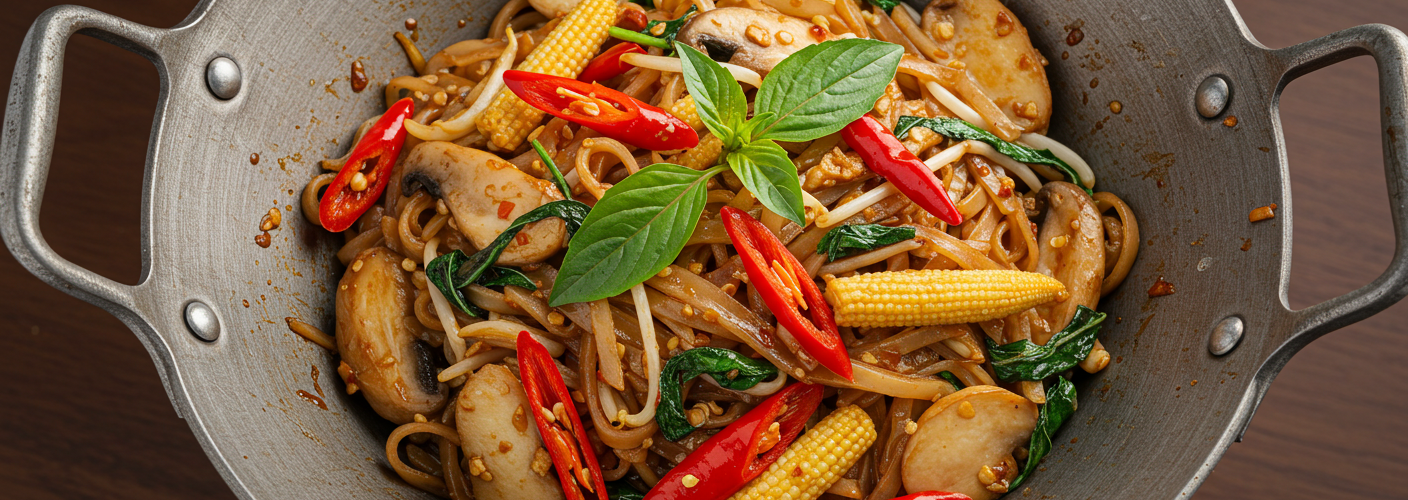Pad Kee Mao, often dubbed “drunken noodles,” is a traditional Thai dish known for its vibrant flavors and delightful medley of vegetables. This stir-fried noodle dish has gained immense popularity not just in Thailand but around the world, winning over food enthusiasts with its irresistible combination of spice, texture, and freshness.
The Allure of Pad Kee Mao
At the heart of Pad Kee Mao is its unique character. Unlike its more subdued counterparts, Pad Thai, Pad Kee Mao boasts a robust flavor profile that is both exhilarating and comforting. The dish typically features wide rice noodles, which have a chewy texture and serve as the perfect canvas for an array of ingredients. The secret to its allure lies in the balance of spice with the freshness of vegetables, creating a harmonious dish that leaves you craving more.
Ingredients That Make a Difference
The beauty of Pad Kee Mao resides in its simplicity yet complexity. The key ingredients include wide rice noodles, fresh vegetables, protein (like chicken, shrimp, or tofu), and an array of seasonings that impart depth to the dish. Common vegetables found in Pad Kee Mao include bell peppers, broccoli, onions, and sometimes, fresh Thai basil that adds a fragrant aroma.
What really sets Pad Kee Mao apart is its signature sauce. Typically made with soy sauce, oyster sauce, and a touch of chili, the sauce enhances the flavor of the noodles and vegetables while introducing a spicy kick that defines the dish. For those who relish heat, extra chili or a splash of chili paste can dial up the spice level to your liking.
Cooking Pad Kee Mao: A Quick and Satisfying Meal
Making Pad Kee Mao is a delightful journey that can be accomplished in a matter of minutes once all ingredients are prepped. Here’s a basic approach to whipping up this tantalizing dish:
- Soak the Noodles: Start by soaking the wide rice noodles in warm water until they become pliable. This usually takes about 30 minutes.
- Stir-Frying the Ingredients: In a large wok or frying pan, heat oil over high heat. Introduce your choice of protein first, cooking it until golden brown. Then, add an assortment of vegetables, tossing them for a few minutes until just tender yet still crisp.
- Adding the Noodles and Sauce: Once the vegetables are ready, drain the noodles and add them to the wok. Pour in the prepared sauce and stir-fry everything together, ensuring the noodles are evenly coated and heated through.
- Finishing Touches: Finally, a sprinkle of fresh Thai basil and a squeeze of lime can elevate the dish’s flavor profile, adding brightness and freshness.
Enjoying Pad Kee Mao
What makes Pad Kee Mao truly special is its flexibility. You can adjust the spice level according to your preference or play with the types of vegetables based on what’s in season. This adaptability makes it suitable for everyone, from those who love bold flavors to those who prefer something milder.
Whether enjoyed at a bustling street food stall in Thailand or created in your home kitchen, Pad Kee Mao serves as a reminder of the rich tapestry of flavors in Thai cuisine. The dish not only satisfies the palate but also offers a sensory experience through its vibrant colors and enticing aromas. So grab your skillet, and let Pad Kee Mao take center stage in your next meal!




Add comment